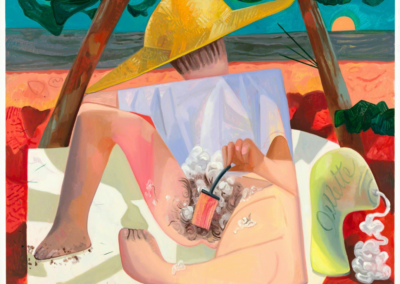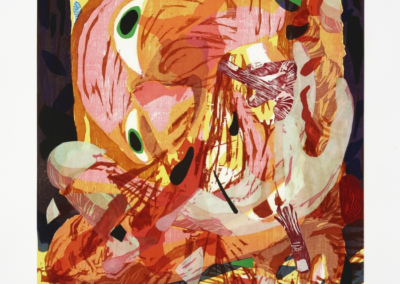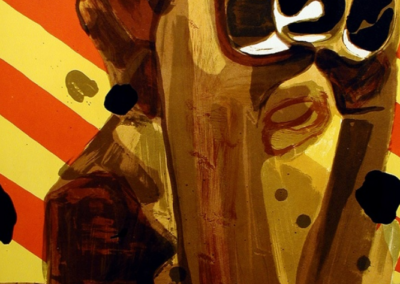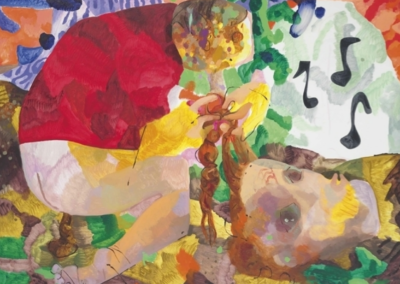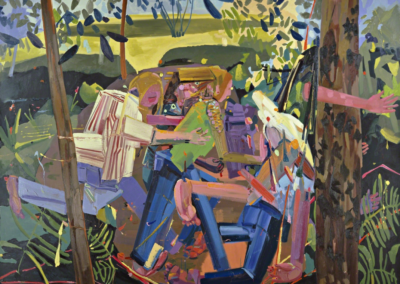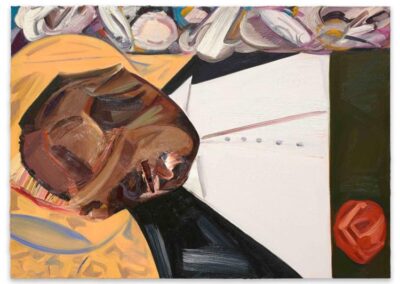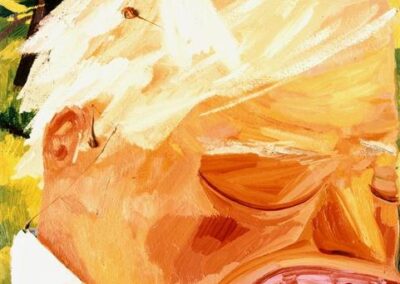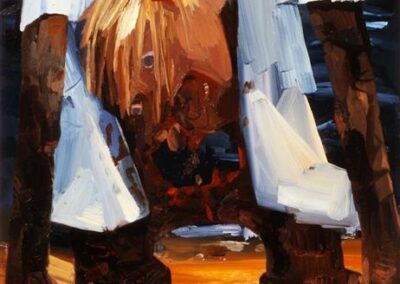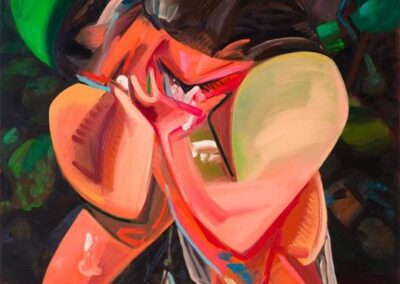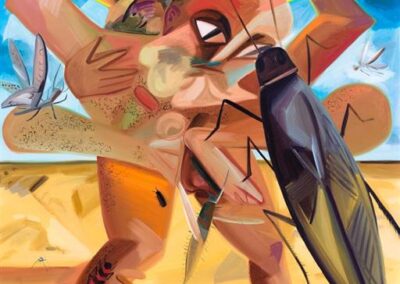Our next Artist You Need To Know is Dana Schutz.
Schutz is an American artist who lives and works in Brooklyn, New York and is known for her expressive and gestural paintings that often take on specific subjects or narrative situations as a starting point, for inspiration.
Curator Katy Siegel, in an accompanying text to the exhibition Dana Schutz: Paintings 2002-2005 stated that Schultz’ paintings “speak so vividly of their making” and are an “allegory for the process of making art.” The curator elaborates with how “by rendering the process of creation as one of drawing on oneself, recycling oneself and making oneself, Schutz creates a model of creation that blurs beginnings and endings, avoiding the dramatic genesis of the modernist blank canvas, as well as the nihilistic cul-de-sac of the appropriated media image.” (from here)
Dana Schutz creates paintings “that capture the ambiguities of her subjects’ psychological states. The artist often depicts grotesque figures adrift in kaleidoscopic landscapes or vivid fields of color, bridging a sense of internal turmoil and external chaos. Her compositions have perfectly depicted the sensations of sneezing, being trapped in an elevator, showering, and simply living in a fast-paced world.” (from here)
Schutz received her MFA from Columbia University and has exhibited in New York, London, Paris, Berlin, Miami, Geneva, and Los Angeles. Her artwork can be found in the collections of the Los Angeles County Museum of Art, the Metropolitan Museum of Art, the Museum of Modern Art, Saatchi Gallery, the Guggenheim Museum, the Whitney Museum of American Art, and the Institute of Contemporary Art, Boston.
A more extensive listing of her accomplishments can be seen here.
It would be remiss to talk about the art and aesthetics of Dana Schutz and not mention the controversy regarding her work in the 2017 Whitney Biennal and the myriad of conversations – some very heated – around the inclusion of her painting Open Casket. It is (depending upon where you stand) an uncomfortable reminder of the prevalence of institutional racist violence in the United States, or the exploitation of one community’s suffering to be sanitized, commodified and exploited by another in a manner talked about by Theodor Adorno. For those unfamiliar with the subject of the painting – Emmet Till’s murder and how nearly seven decades later justice has not only not been down but been evaded and denied – more can be learned here.
In many ways, it acted as a flashpoint for larger conversations about race, history and the role (assumed or integral) of the artist in society. The best of the responses to Schutz’s work and the larger dialogue was from Coco Fusco (an artist and writer and professor of art at The Cooper Union).
Fusco offered the following considered response: “Whether or not we like the painting or consider it her greatest work — I do not, but think it still has value — Schutz’s decision to refract an iconic photograph through the language of abstraction has forced the art world out of its usual complacency and complicated the biennial’s uniformly celebratory reviews. She has, perhaps inadvertently, blown the lid off of a biennial that features an almost too perfect blend of messy painting, which appeals to conservatives, and socially engaged art, which appeals to the more politically minded. As far as I’m concerned, that’s not such a bad thing, given the ghastly state of American political culture at this moment.” (from here)
’My paintings are loosely based on metanarratives. The pictures float in and out of pictorial genres. Still lifes become personified, portraits become events and landscapes become constructions. I embrace the area between which the subject is composed and decomposing, formed and formless, inanimate and alive. Recently I have been making paintings of sculptural goddesses, transitory still lifes, people who make things, people who are made and people who have the ability to eat themselves. Although the paintings themselves are not specifically narrative, I often invent imaginative systems and situations to generate information. These situations usually delineate a site where making is a necessity, audiences potentially don’t exist, objects transcend their function and reality is malleable.’ (Schutz, writing about her work in 2004)
Much more about this artist – including many more of her evocative and delightfully frenetic paintings – can be enjoyed here.





